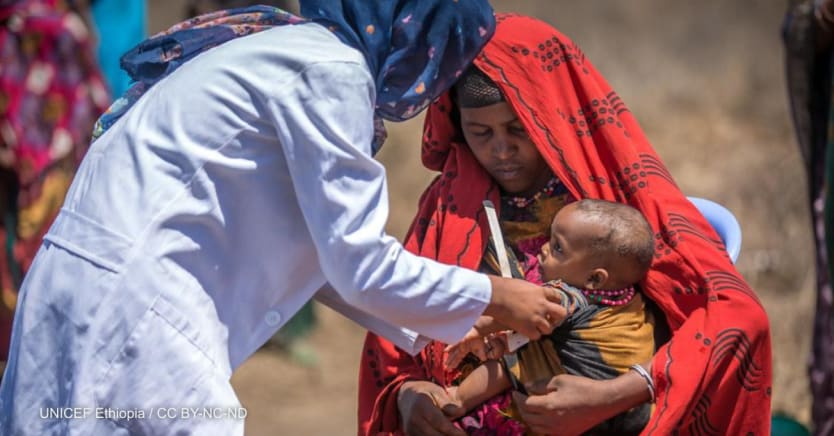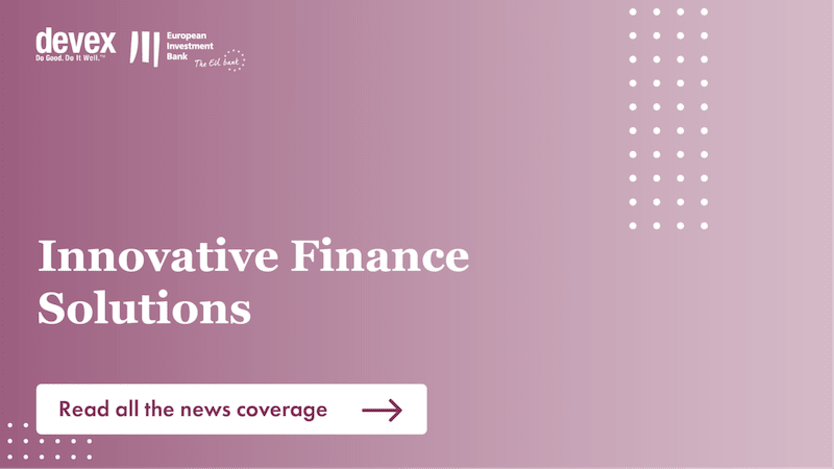
Scaling up nutrition interventions with appropriate financing is a vital part of achieving the universal health coverage agenda, nutrition experts say.
Although adequate nutrition leads to healthier societies and builds human capital, it is too often missing from basic health packages or the priority health services that a population receives. As such, countries have a harder time prioritizing sustainable financing, said Juan Pablo Uribe, the global director for health, nutrition, and population at the World Bank and the director at the Global Financing Facility for Women, Children and Adolescents.
Nutrition for Growth garners $27B in commitments
Nutrition for Growth saw pledges from 66 governments to increase progress on eliminating malnutrition.
“We need to redress this huge goal of guaranteeing universal health coverage with access to health care services with financial protection for households, and ensure that we take that opportunity to strengthen and mainstream nutrition in the core of progress to universal health coverage,” said Uribe, speaking Tuesday during a Nutrition for Growth webinar in the Nutrition Financing Week event series. “Nutrition has to be on the top list of [universal health] services.”
The series of events this week are sponsored by the World Bank and GFF to discuss ways to increase financing and accountability for commitments made at last month’s Nutrition for Growth Summit, which was hosted by Japan. Now is “the right time to intensify action,” with 67% of the 396 new commitments announced at N4G relating to health, said Francesco Branca, director of the Department of Nutrition for Health and Development at the World Health Organization.
An investment framework developed by the World Bank and Results for Development found that meeting the six World Health Assembly nutrition targets by 2025 would require an average of $7 billion every year from 2016 to 2025.
Major nutrition interventions, such as wasting treatment, are often led by international development organizations that are disconnected from countries’ health systems, Branca said. Nutrition must be part of the continuum of care if it is to both receive sufficient financing and be effective, he said.
Data in the “2020 Global Nutrition Report” cited by Branca shows that among one group of 48 mostly low-income countries, average government spending on “nutritional deficiencies” is just $1.87 per person, representing the lowest expenditure for any disease category tracked. Many times more funding goes toward noncommunicable diseases — the category with the highest annual expenditure — as well as infectious and parasitic diseases, which see the second-most spending. Funding is therefore not proportional to the burden of malnutrition, the report notes.
“The coverage of nutrition intervention in health care lags far behind the coverage of traditional health nonnutrition services,” Branca said.
“Nutrition has to be on the top list of [universal health] services.”
— Juan Pablo Uribe, global director for health, nutrition, and population at the World Bank and director at GFFThis month, the World Bank Group and GFF published a working paper to detail how improved nutrition coverage and quality can be delivered through the health system, as well as ways in which health financing can be used to do so while encouraging universal health coverage, or UHC. WHO provided its input on the research through a peer review process.
Researchers found little existing literature detailing efforts to strengthen nutrition as part of the UHC agenda, so they began by examining how countries addressed financing challenges to including nutrition in their UHC reforms. They found that countries too often say they will make nutrition a part of UHC but “fail to specify what it takes to sustainably finance and deliver quality nutrition services,” according to the researchers’ presentation during Tuesday’s webinar.
“We know what nutrition services we need to invest in and why they are important. … But there has been insufficient focus on how to leverage UHC platforms for nutrition outcomes,” said Kyoko Shibata Okamura, a nutrition specialist at the World Bank who worked on the paper. “There are knowledge gaps to fill regarding how to deploy resources more effectively to deliver quality nutrition services and ultimately achieve the results we are committed to achieving.”
The paper outlines three “health financing arrangements” for services: revenue raising, or collecting funds through mechanisms such as taxes or official development assistance; pooling, or prepaying funds to spread health care financing risks across a population; and purchasing, or paying for health services and determining what services will be paid for and at what cost.
Priority-setting is needed to ensure that nutrition receives the necessary funds across these levers of the health system, the paper said.
As the effects of the COVID-19 pandemic continue to reverberate for nutrition and the broader health system, the paper’s insights can help the nutrition community translate commitments made at N4G into practice, Branca said.
“The how is now what we are mostly concerned with,” Branca said.
This coverage exploring innovative finance solutions and how they enable a more sustainable future, is presented by the European Investment Bank.









